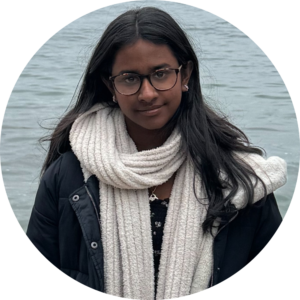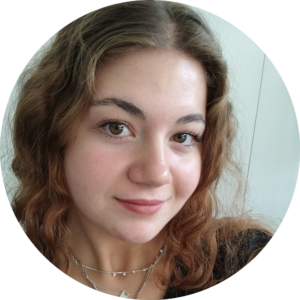17 year-old Ananya Prasanna shines a light on women in maths, palaeontology, chemistry and biology

May 21, 2022. Unveiling of a statue of Mary Anning at Lyme Regis in Dorset, the place where she lived and made most of her famous discoveries.
August 1, 2024
Forgotten herstory: five female scientists who changed the world
When I’m looking through my textbooks, I often see prominent male scientists described as “the father of…”. The same doesn’t go for women involved in discoveries, who are often hidden behind their male counterparts.
Why have women in science been forgotten for so long, and who are the unsung heroes we need to shine a light on?
Here are five examples of some pioneering women scientists, listed in chronological order.
Metrodora (between 200 – 400 A.D)
Fun Fact:
We don’t really know if Metrodora was one person – her name actually translates to ‘Gift of the Womb’ (rather fitting!) which led people to believe this was just a pseudonym.
Metrodora was a physician in Ancient Greece, best known for her work in female health. She wrote a textcalled On the Diseases and Cures of Women, which detailed her own strategies to treat female ailments.
In particular, she developed methodsfor checking a woman’s virginity, which helped provide evidence in cases of suspected sexual assault. She could also repair a woman’s hymen in these cases, to help them overcome the trauma associated with the assault.
She set out guidelines for the conduct of physicians, so that examination could never be used as a facade for assault, as it often was. She also pioneered various surgical techniques, including cauterisation, and techniques to save a woman’s life after a miscarriage.
Metrodora’s work was inspired by the ever-famous Hippocrates, but, unlike his texts, her book was not well respected by other physicians at the time. In fact, they almost lost her manuscripts – her work could have been forgotten forever.
However, she has inspired physicians for centuries, particularly during the Middle Ages, and sparked a chain reaction in research in female health. This was particularly necessary at a time when women had little respect. They’d often receive cop-out diagnoses because many male physicians were not interested in specialising in female health – it didn’t carry the glory that other specialisations did.
Mary Anning (1799–1847)
Mary Anning was a pioneering palaeontologist, best known for her fossil collecting. Born in Lyme Regis, on the UK’s Jurassic Coast, she had a difficult childhood; her family were very poor and faced alienation due to their position as religious dissenters. She also had very little formal education.
Mary’s father was an amateur fossil collector, who taught her how to collect, treat, and clean fossils. When he suddenly died, her mother encouraged her to sell her discoveries, to help the family.
At the age of just 12, young Mary made an incredible discovery – she dug out a 5.2m-long Ichthyosaur skeleton – still on display today at the Natural History Museum in London.
She continued to make similarly ground-breaking discoveries, including the complete skeleton of a Plesiosaurus (meaning ‘near to reptile’), a specimen that was so strange that leading palaeontologists at the time argued it must be a fake.
At a time when extinction had just been proposed as a theory but was not yet fully accepted, and when Darwin’s theory of evolution was almost 50 years away from fruition, her ideas and findings seemed debatable.
Mary was not given a say in the arguments regarding her discoveries, and was not invited to any discussions. Even when scientists became more accepting, she received no credit – her finds would often be referenced in future research but without recognition from male scientists.
Perhaps her most famous discovery, and one that sparked the most awe from the public, was that of a winged creature, later known as the Pterodactyl. She also pioneered the study of coprolites – better known as fossilised poo.
In recent years, she has become better known, with a movie about her life, Ammonite, released in 2020. And just two years ago a statue of her was unveiled in her home town of Lyme Regis.
Nettie Stevens (1861–1912)
Nettie Stevens was an American geneticist who discovered a crucial part of our modern understanding of genetics: the existence of sex chromosomes. The question as to how one species, humans, developed two highly varying morphological forms (males and females) had long puzzled naturalists such as Darwin and Linnaeus.
Studies in Spermatogenesis (1905), by Nettie Maria Stevens
In a 1905 work entitled Studies on Spermatogenesis Stevens outlined how the inheritance of a Y chromosome correlated with male developments in insects.
Despite the incredible significance of this discovery, her paper has been cited relatively few timescompared to other related documents in Google Scholar research papers.
Stevens had to work as a teacher/librarian over the course of many years to save enough money to continue her education at a graduate level, but her application for a research grant to study the possibility of sex chromosomes was championed by a former Nobel Prize laureate, Thomas Hunt Morgan.
Stevens’ work was particularly significant because it overturned the belief that sex was determined by environmental conditions, which shifted scientists’ views entirely. Unfortunately, she died from breast cancer after a short but busy career, in which she published 40 remarkable papers.
Emmy Noether (1882–1935)
German-born Amalaie Noether – commonly known as Emmy – is regarded as one of the most important female mathmaticians of the early 20th century.
Although her father was a maths professor, as a child she was limited to the typical activities of upper middle-class girls, attending a ‘finishing school’ which taught young women social etiquette rather than a college preparatory school. However, she defied expectations and pursued a university education in mathematics.
Due to her gender, she wasn’t permitted to study for a degree at first, but instead had to audit classes; eventually the Mathematical Institute of Erlangen allowed females to enrol. After graduation, she continued to work at Erlangen, but without pay. There, she delved into the theoretical algebra which she is best known for.
Over time, she worked with many renowned scientists, including Einstein, and proved complex theorems crucial to general relativity and elementary particle physics – in fact, one is known as Noether’s Theorem and is still relevant to this day.
Noether’s work suffered as a result of arguments between conceptual and applied mathematics. People didn’t support her abstract, conceptual approach to algebra; instead they expected more physically applied, constructionist approaches to the subject.
Alice Augusta Ball (1892–1916)

Alice Augusta Ball
This American chemist is credited with discovering a successful treatment for Hansen’s disease, better known as leprosy. The ‘Ball method’ was the only working treatment prior to the development of antibiotics and saved thousands of lives.
After high school in Seattle, she studied pharmaceutical chemistry at the University of Washington and then became the first woman, and the first African-American, to earn a master’s degree in chemistry from the College of Hawaii.
While there, she delved into chaulmoogra oil and its chemical properties; it was known to be effective in treating leprosy in theory, but it was very difficult to administer. Ball created a water-soluble solution of the oil’s active compounds (which actually treated the disease), so they could be injected with minimal side effects.
Sadly, Ball died shortly after this discovery, at the very young age of 24, meaning that she didn’t get the chance to formally publish her work although it affected so many people. She was instrumental in treating leprosy and saving lives.
So, here are five scientists that you may not have heard of before, and their incredibly important discoveries. And they’re just one group from many more that could be highlighted.
Watch out on Harbingers’ for more spotlights on female role models in science – and other fields – that could inspire your own discoveries!




